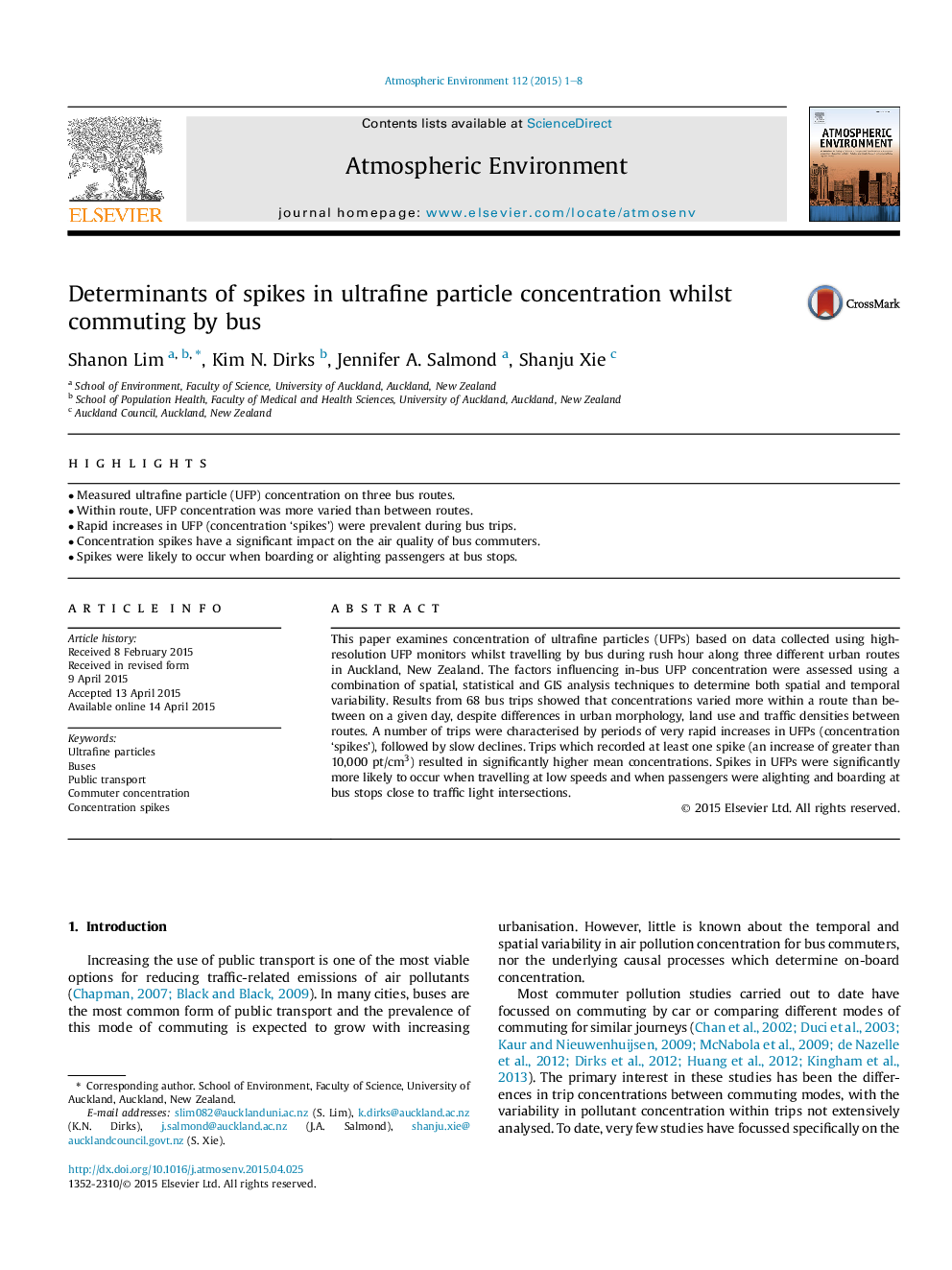| Article ID | Journal | Published Year | Pages | File Type |
|---|---|---|---|---|
| 6338032 | Atmospheric Environment | 2015 | 8 Pages |
â¢Measured ultrafine particle (UFP) concentration on three bus routes.â¢Within route, UFP concentration was more varied than between routes.â¢Rapid increases in UFP (concentration 'spikes') were prevalent during bus trips.â¢Concentration spikes have a significant impact on the air quality of bus commuters.â¢Spikes were likely to occur when boarding or alighting passengers at bus stops.
This paper examines concentration of ultrafine particles (UFPs) based on data collected using high-resolution UFP monitors whilst travelling by bus during rush hour along three different urban routes in Auckland, New Zealand. The factors influencing in-bus UFP concentration were assessed using a combination of spatial, statistical and GIS analysis techniques to determine both spatial and temporal variability. Results from 68 bus trips showed that concentrations varied more within a route than between on a given day, despite differences in urban morphology, land use and traffic densities between routes. A number of trips were characterised by periods of very rapid increases in UFPs (concentration 'spikes'), followed by slow declines. Trips which recorded at least one spike (an increase of greater than 10,000Â pt/cm3) resulted in significantly higher mean concentrations. Spikes in UFPs were significantly more likely to occur when travelling at low speeds and when passengers were alighting and boarding at bus stops close to traffic light intersections.
